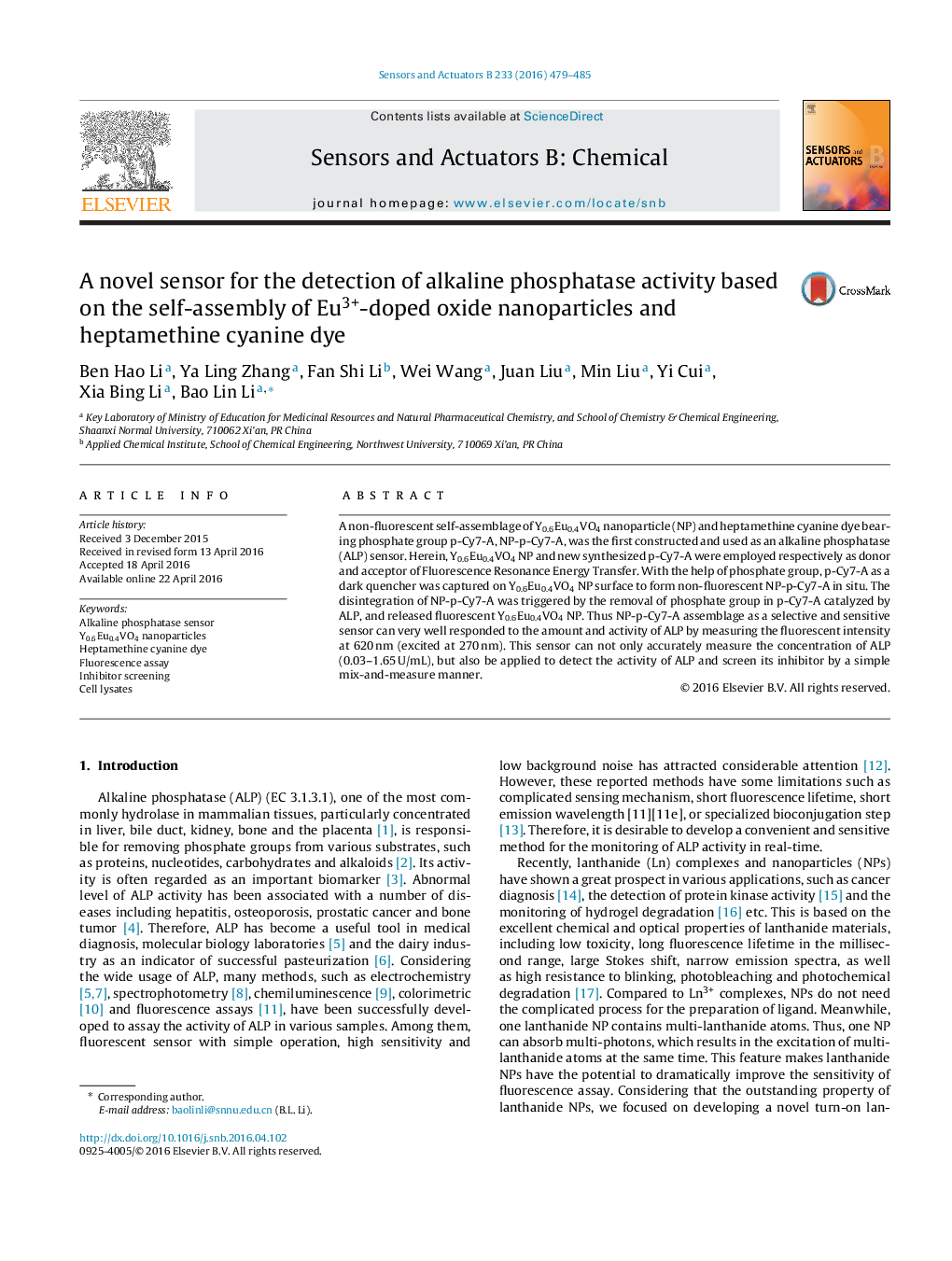| Article ID | Journal | Published Year | Pages | File Type |
|---|---|---|---|---|
| 7143971 | Sensors and Actuators B: Chemical | 2016 | 7 Pages |
Abstract
A non-fluorescent self-assemblage of Y0.6Eu0.4VO4 nanoparticle (NP) and heptamethine cyanine dye bearing phosphate group p-Cy7-A, NP-p-Cy7-A, was the first constructed and used as an alkaline phosphatase (ALP) sensor. Herein, Y0.6Eu0.4VO4 NP and new synthesized p-Cy7-A were employed respectively as donor and acceptor of Fluorescence Resonance Energy Transfer. With the help of phosphate group, p-Cy7-A as a dark quencher was captured on Y0.6Eu0.4VO4 NP surface to form non-fluorescent NP-p-Cy7-A in situ. The disintegration of NP-p-Cy7-A was triggered by the removal of phosphate group in p-Cy7-A catalyzed by ALP, and released fluorescent Y0.6Eu0.4VO4 NP. Thus NP-p-Cy7-A assemblage as a selective and sensitive sensor can very well responded to the amount and activity of ALP by measuring the fluorescent intensity at 620Â nm (excited at 270Â nm). This sensor can not only accurately measure the concentration of ALP (0.03-1.65Â U/mL), but also be applied to detect the activity of ALP and screen its inhibitor by a simple mix-and-measure manner.
Related Topics
Physical Sciences and Engineering
Chemistry
Analytical Chemistry
Authors
Ben Hao Li, Ya Ling Zhang, Fan Shi Li, Wei Wang, Juan Liu, Min Liu, Yi Cui, Xia Bing Li, Bao Lin Li,
